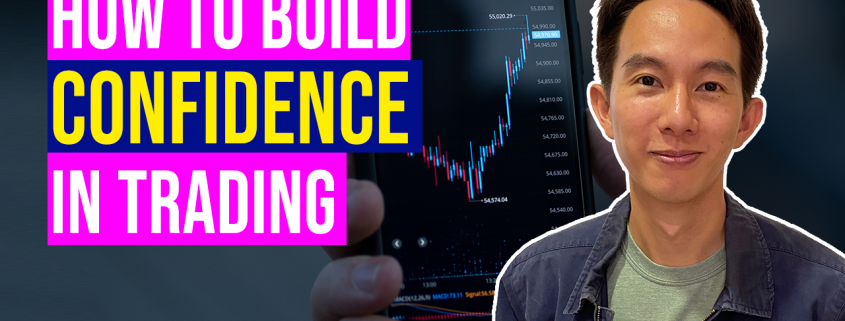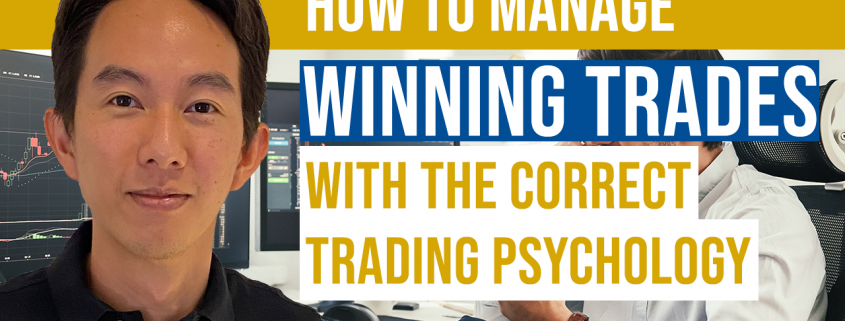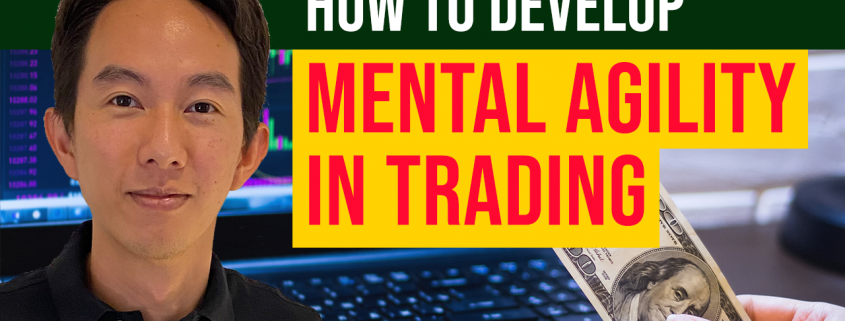Many new to trading have the tendency to liquidate positions that show a small profit, yet they keep those positions that show a loss as are unwilling to take a loss, in hope that prices will rebound.
Such a counter-intuitive strategy will result in small wins and large losses, but why do people still do it?
Emotional value of losses
Given a choice, which would you pick? (Profits)
- Sure profit of $1,000, or
- 50% chance of $2,000 profit, 50% chance of $0?
Given a choice, which would you pick? (Losses)
- Sure loss of $1,000, or
- 50% chance of $2,000 loss, 50% chance of $0?
Mathematically, both choice in each scenario give the same expected value, E(x).
You can calculate this by taking (% chance of 1st event x value of 1st event) + (% chance of 2nd event x value of 2nd event).
For example in the first question, (50% x $2000) + (50% x $0) = $1000, which is equivalent to the sure profit of $1000.
In the second question, (50% x -$2000) + (50% x -$0) = -$1000, which is equivalent to the sure loss of $1000.
However, most people will pick option 1 for the first question (profits), and pick option 2 for the second question (losses).
Why is this so?
Loss Aversion / Breakeven effect
With its roots from prospect theory, this refers to investors’ tendency to strongly prefer avoiding losses to acquiring gains.
For loss aversion, investors prefer an uncertain gamble to a certain loss as long as the gamble has the possibility of no loss, even though the expected value of the uncertain loss is lower than the certain loss.
For the breakeven effect, investors prefer a gamble that offers the potential of recovering to finish at an aspiration level rather than a certain rate of return.
Some studies suggest that losses are twice as powerful, psychologically, as gains.
Hence, investors will cling to the hope (including rationalization) that prices will rebound to their entry price, which they have now established as a reference point.
However, this reference point is illogical, since their entry point does not affect the future direction of prices.
One question to ask is, “if you don’t have a position now, would you open a new position?”
If prices fall past their stoploss (showing that their analysis was wrong), it means that the odds are now against them.
If prices fall but do not hit their stop, and subsequently rises back to breakeven, it actually shows that their initial analysis is still correct (not proven wrong), which means that exiting at breakeven is in fact destroying their winning trades.
This will lower their hitrate by causing them to exit winners prematurely.

Disposition Effect
According to the disposition effect, investors are less willing to recognize losses (which they would be forced to do if they sold assets which had fallen in value), but are more willing to recognize gains.
This can be explained by the value function curve, where investors turn more risk-seeking as the stock depreciates.
As shown by studies on ex-post returns, it would be more profitable to cut losses fast and let profits run.
Hence, investors should treat unrealized losses as a sunk cost, and focus on reducing prospective costs (likelihood of more losses).
Unfortunately, irrational hope destroys any edge their analysis provides, thus resulting in an unfair gamble.
Do You Have the Ability to Accept Losses?
Before taking any trade, you should already have the exact risk of the trade defined in the trading plan.
This means that you know in advance exactly how much you are risking on each trade, and exactly how much you will lose if the trade goes against you (and hits your stoploss).
Theoretically, this should prevent anyone from having large losses. But why does it not work for everyone?
The problem lies not in the theory or the trading plan, but in the person.
There won’t be any problem if you just stick to the plan, and watch the trade play out, even if it hits your stoploss.
However, most people do not have the mental ability to accept loses. Most people are conditioned to embrace winning, so they cannot stand losses.
For example, if you have calculated that the risk on a trade is $200, and you go ahead and place the trade, you know that in the worst-case scenario, you will only lose $200 of the trade hits your stoploss.
But the question is, deep down in your heart, have you really accepted that risk (potential loss)?
You will find out the answer when price comes close to hitting your stoploss.
If you have truly accepted the risk, and trust your analysis and trading plan, you will be able to sit there calmly and wait to see if your stoploss gets hit.
On the other hand, if you have not fully accepted the risk, then once price comes close to your stoploss, you will start second-guessing your plan:
- “Should I shift my stoploss to give the trade more room for error?”
- “Should I remove my stoploss?”
- “Should I buy more so that i can get out at breakeven on the next rebound?”
If these are the thoughts running through your head, and you feel extremely stressed and end up watching prices like a hawk, then it means you have not truly accepted the risk of trading.
You cannot expect to win 100% of the time.
So in order to win in the long run, you have to accept that you will lose some of the time.
The Purpose of the Stoploss
There are actually 2 main goals of the stoploss:
- To keep your losses small
- To give you a peace of mind
As we mentioned earlier, once you have learnt that losses are part and parcel of trading, and that you cannot win without the risk of loss, you will come to truly accept the risk of each trade.
Once you have that acceptance, the stoploss will no longer be a source of stress, and instead give you a peace of mind.
Because you will no longer have to monitor your trade 24/7. Once you place your trade, you can just walk away from the screen because you know exactly how much you can lose, so there is no fear of “blowing your whole account” on a bad trade.
If you follow your trading plan, it will help you get out when the loss is small. It is better to take a small loss than a big loss.
One of the most dangerous thing you can do as a trader is to average down and hope to get out of the trade at breakeven.
Averaging down refers to adding new positions to a trade that has gone against you, so that you can get in at a “better” price. This increases your risk several fold, depending how how many times you continue to average down, and turns a small loss into a big loss.
This is just another way of trying to avoid losses. (Which shows you have not truly accepted the risk.)
Best Ways to Manage Losses
Traders should keep mind that trading with an edge will increase their wealth over time, but it is not possible to be right on every trade. The number of times you win or lose doesn’t matter.
It is how much you lose when you are wrong and how much you win when you are right that matters.
One should also separate decision-making from execution, meaning to “plan the trade” and “trade the plan.”
This means creating the plan during a low-stress period (when the market is not open), and sticking to the plan during a high-stress period (when the market is open).
Make sure you really trust and commit to the plan, and accept the downside risks, before you even place the first trade.
A good way to manage risk is to use a stoploss to limit your downside, and pick trades with good reward-to-risk ratio so that the profits from your winning trades will be more than the losses from your losing trades.
This will allow you to cut your losses fast, and let your winners run.
After trading for 18 years, reading 1500+ books, and mentoring 1000+ traders, I specialise in helping people improve their trading results, by using tested trading strategies, and making better decisions via decision science.








